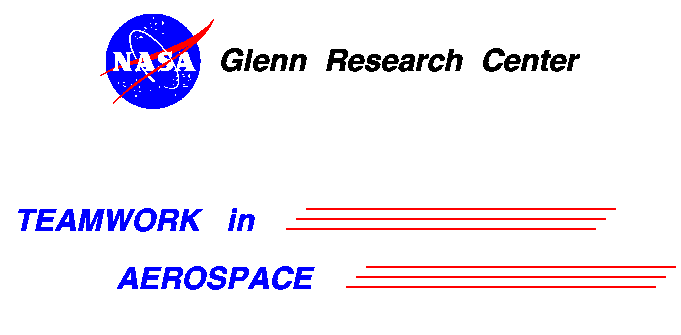|

These pages describe an educational activity which has been presented by Tom Benson, of
the NASA Glenn Research Center, at
several schools and workshops. There are two main objectives to
the activity; one is to expose the students to the operation
of the aerospace industry, and the other is to put the student
in a team environment to learn some things about how teams work.
The exercise begins with about a 5 minute
overview
of how aerospace works
It is surprising how many students believe that the Air Force builds and flies
their airplanes. The
activity
itself consists of building and flying a
paper airplane.
To make things interesting, the students are organized into groups (companies) which
must produce one airplane per group in a short time (usually about 15 minutes).
The groups "fly-off" against each other in a competition to see who can keep
their plane in the air the longest. The fly-off usually takes about 10 minutes
as well. After the fly-off, the fun begins with a
discussion
with all the companies.
This discussion is guided by the teacher and runs for the
duration of the exercise (20 minutes).
The emphasis of the activity is not on the aerodynamics of their gliders or who
wins the contest, but on the process that produced the plane. There are several variations
on the basic game which are used to make things more interesting.
If you have a large group, make large companies (5 -10 students), give them
enough resources that everybody can make their own plane, but ask for only one
plane from each group. The discussion then becomes one of evaluating how they chose
the one design and the team dynamics. To stir the pot a little more,
randomly appoint one person in each company to be the manager. This usually introduces
a lot of management-worker (authority) problems, given the short time span to accomplish
the task. The most interesting
variation
is to appoint manager, design team, manufacturer,
and test (pilot) positions, to clearly define the roles of each, and to enforce boundaries
(managers can't fold paper .. manufacturers can't fly). This emphasizes the problems
of communications within a team.
In the discussions it is important to point out that the problems they encounter (time
scheduling, bias, authority, communications, personalities .. etc) are all things that
engineers face on the job every day. Solving these problems are every bit as important as solving
differential equations, and the problem solving skills are learned in school, at home,
and at their jobs. There's much more to aerospace than airplanes and rockets.
To assist the teacher, we have produced a
Power Point Presentation
containing all the slides that are in the exercise. The teacher may use this presentation to
guide the activity or modify it for their own best use.

Navigation:



- Standards
- Background
- Activity
- Aerodynamics Activity Index
- Beginner's Guide Home Page
|
